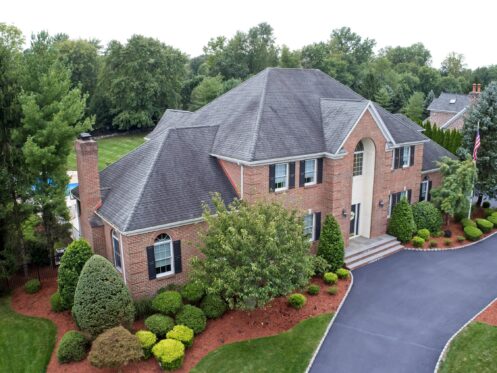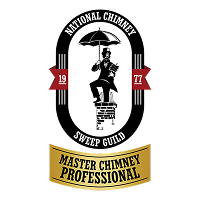When the summer arrives here in Alexandria, VA, you won’t likely think much about your chimney. After all, it’s only in use in the colder months, and that’s half a year away! The problem with that logic is that many of the most essential chimney maintenance tasks require that your chimney not be in use. In other words, summer is the perfect time for chimney maintenance.
Here’s why that is and a guide to the types of maintenance you should plan for your chimney each summer.
Why Summer Is the Right Time for Chimney Maintenance
Before discussing your chimney’s summertime maintenance needs, you should know why summer is the appropriate time to do it. The first important reason is that you’ll have an easier time scheduling a maintenance appointment. Like clockwork, chimney maintenance companies like us start getting extremely busy as fall approaches. The reason is that most people begin thinking of their chimneys’ needs as they anticipate using their fireplace or wood stove.
The second reason summer is the perfect time for chimney maintenance is that the weather is good. With less chance of inclement weather, it’s easier for a technician to work on your chimney. And in the event your chimney needs repair, you’ll need a stretch of dry weather to permit that, too.
Critical Summer Chimney Maintenance Tasks
Depending on how much you use your fireplace or wood stove, your chimney’s annual maintenance needs may vary. The following are some of the most common summer chimney maintenance needs.
A Thorough Inspection
It’s hard to argue with the comfort and pleasant ambiance that a fireplace or wood stove creates. Unfortunately, it’s often just as easy to forget that having a fire inside a building is inherently dangerous. Every time you use your fireplace or wood stove, you’re counting on it containing the fire and safely venting its gaseous byproducts outside. If anything goes wrong with your chimney, it can jeopardize your health and safety. That’s why the Chimney Safety Institute of America (CSIA) recommends annual chimney inspections.
An inspection can reveal numerous hidden issues in your chimney. It may discover small cracks before they widen enough to allow dangerous flue gas leaks. Alternatively, it may detect blockages that cause flue gases to back up into indoor spaces. Or, it could find dangerous creosote buildup that may lead to a chimney fire.
A professional chimney inspection involves the use of specialized video equipment. It allows the technician to see the surfaces inside your chimney up close. That way, they can evaluate the condition of your chimney’s lining. It also allows them to spot blockages or excessive creosote buildup. They’ll also examine your chimney’s exterior masonry for cracks and other signs of damage.
Finding and Removing Debris or Animal Nests
Although your chimney has some protection against the entry of foreign matter, its defenses aren’t perfect. One of the most common sources of chimney obstructions is animal nests. While you view your chimney as a critical safety device, animals perceive it as a warm, dry refuge to spend the winter. Unfortunately, by the time most animals realize that your chimney might harm them, they’ve already built a nest. At that point, they’ll either flee or, worse, die inside your chimney.
It’s essential to remove animal nesting material from your chimney as soon as possible. Not only does it pose a fire risk, but it may also cause flue gases to back up. Plus, if an animal were unfortunate enough to pass away in your chimney, its remains may pose a health risk. And it goes without saying that animal remains will cause a noticeable and unpleasant odor.
Summertime is also the perfect time to have any trees that overhang your roofline trimmed back. When surrounding trees get too close to your chimney, dropped branches and leaves may block it. Those aren’t things you’ll want to address in the winter, when snow and ice can make rooftop work perilous. Also, encroaching trees make it easier for animals like squirrels to reach your chimney. So, trimming them back will decrease the odds of an animal nesting there during the winter.
Chimney Cleaning
Whenever you use your fireplace or wood stove, your goal is the complete combustion of the wood you use as fuel. However, despite your best efforts, that rarely happens. Often, that’s due to inadequate airflow into your fireplace or wood stove. An air-starved fire may still burn, but it will cause a distinct change in the gases traveling up your flue.
One of the most significant results of incomplete combustion is that it can turn oils trapped in the wood into gas instead of burning them. Then, as the gaseous oils travel up your chimney, they begin to cool as they approach the outdoors. When that happens, they turn back into oils that can coat the inside of your chimney. When those oils combine with water vapor and other combustion chemicals, you get a substance called creosote.
Initially, creosote deposits appear as a flaky buildup along the inner surfaces of your chimney. At that point, a basic chimney cleaning can easily dislodge and remove creosote. However, if you go too long between cleanings, the creosote deposits begin to change. The layers of flaky creosote will gradually turn into what looks like tar. Once creosote deposits reach that state, they’re far more difficult to remove. That can increase the complexity and cost of your next chimney cleaning.
If you ignore creosote buildup for too long, it becomes extremely hazardous. The tar-like creosote will harden, posing a significant challenge to removal. Unfortunately, it is also more likely to ignite into a chimney fire at that point. A chimney fire can damage or destroy your chimney’s lining and may even spread into the surrounding structure. Additionally, the hardened creosote will begin to soften from the heat and start dripping like wax down through your chimney. That provides a path for the chimney fire to keep spreading downward, where it may do even more damage.
Scheduling an annual chimney cleaning each summer can eliminate the threat of creosote buildup. It can also extend the life span of your chimney’s lining, saving you money in the process.
Trusted Local Chimney Maintenance Experts
Now that you know the why and how of summertime chimney maintenance, there’s one more thing to consider: who to trust with the task. Rooftop Chimney Sweeps has been the leader in chimney services in Alexandria since 1978. We’re a family-owned business with decades of practical experience. We have a skilled team of chimney experts consisting of skilled masons and master chimney technicians.
We’re also a member of the Hearth, Patio, and Barbecue Association and CISA. But what we’re most proud of is our long list of glowing customer reviews. View our gallery to see some of our work firsthand. And when you’re ready to schedule summertime chimney maintenance in Alexandra, call Rooftop Chimney Sweeps immediately!








